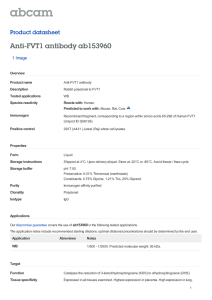Anti-TRAP220/MED1 (phospho T1457) antibody ab182660 Product datasheet 1 Image
advertisement
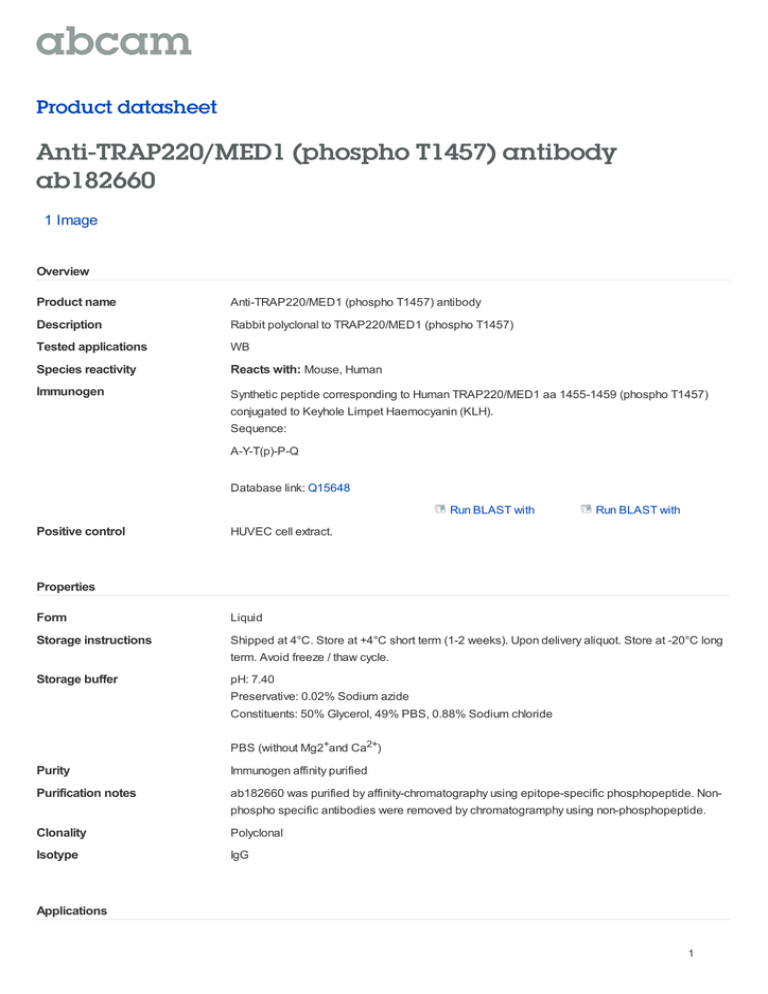
Product datasheet Anti-TRAP220/MED1 (phospho T1457) antibody ab182660 1 Image Overview Product name Anti-TRAP220/MED1 (phospho T1457) antibody Description Rabbit polyclonal to TRAP220/MED1 (phospho T1457) Tested applications WB Species reactivity Reacts with: Mouse, Human Immunogen Synthetic peptide corresponding to Human TRAP220/MED1 aa 1455-1459 (phospho T1457) conjugated to Keyhole Limpet Haemocyanin (KLH). Sequence: A-Y-T(p)-P-Q Database link: Q15648 Run BLAST with Positive control Run BLAST with HUVEC cell extract. Properties Form Liquid Storage instructions Shipped at 4°C. Store at +4°C short term (1-2 weeks). Upon delivery aliquot. Store at -20°C long term. Avoid freeze / thaw cycle. Storage buffer pH: 7.40 Preservative: 0.02% Sodium azide Constituents: 50% Glycerol, 49% PBS, 0.88% Sodium chloride PBS (without Mg2+and Ca2+) Purity Immunogen affinity purified Purification notes ab182660 was purified by affinity-chromatography using epitope-specific phosphopeptide. Nonphospho specific antibodies were removed by chromatogramphy using non-phosphopeptide. Clonality Polyclonal Isotype IgG Applications 1 Our Abpromise guarantee covers the use of ab182660 in the following tested applications. The application notes include recommended starting dilutions; optimal dilutions/concentrations should be determined by the end user. Application Abreviews WB Notes 1/500 - 1/1000. Predicted molecular weight: 168 kDa. Target Function Component of the Mediator complex, a coactivator involved in the regulated transcription of nearly all RNA polymerase II-dependent genes. Mediator functions as a bridge to convey information from gene-specific regulatory proteins to the basal RNA polymerase II transcription machinery. Mediator is recruited to promoters by direct interactions with regulatory proteins and serves as a scaffold for the assembly of a functional preinitiation complex with RNA polymerase II and the general transcription factors. Tissue specificity Ubiquitously expressed. Sequence similarities Belongs to the Mediator complex subunit 1 family. Post-translational modifications Phosphorylated by MAPK1 or MAPK3 during G2/M phase which may enhance protein stability and promote entry into the nucleolus. Phosphorylated upon DNA damage, probably by ATM or ATR. Cellular localization Nucleus. A subset of the protein may enter the nucleolus subsequent to phosphorylation by MAPK1 or MAPK3. Anti-TRAP220/MED1 (phospho T1457) antibody images All lanes : Anti-TRAP220/MED1 (phospho T1457) antibody (ab182660) at 1/500 dilution Lane 1 : HUVEC cell extract, treated with serum with antigen-specific peptide Lane 2 : HUVEC cell extract, treated with serum Predicted band size : 168 kDa Western blot - Anti-TRAP220/MED1 (phospho T1457) antibody (ab182660) Please note: All products are "FOR RESEARCH USE ONLY AND ARE NOT INTENDED FOR DIAGNOSTIC OR THERAPEUTIC USE" Our Abpromise to you: Quality guaranteed and expert technical support Replacement or refund for products not performing as stated on the datasheet Valid for 12 months from date of delivery Response to your inquiry within 24 hours We provide support in Chinese, English, French, German, Japanese and Spanish 2 Extensive multi-media technical resources to help you We investigate all quality concerns to ensure our products perform to the highest standards If the product does not perform as described on this datasheet, we will offer a refund or replacement. For full details of the Abpromise, please visit http://www.abcam.com/abpromise or contact our technical team. Terms and conditions Guarantee only valid for products bought direct from Abcam or one of our authorized distributors 3
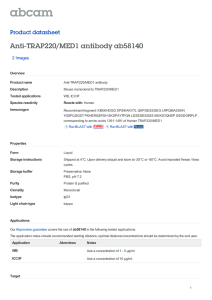
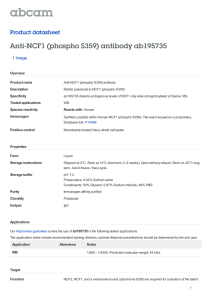
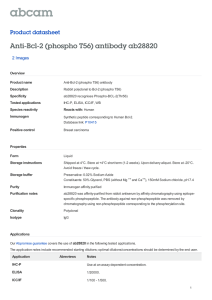
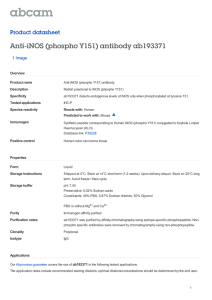
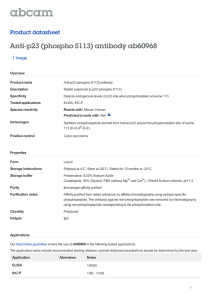
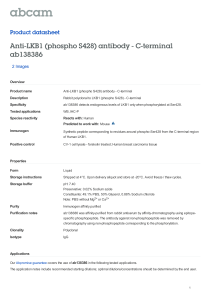
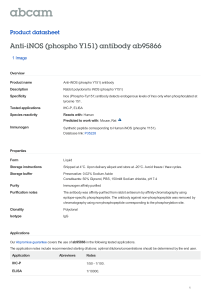
![Anti-Phospholipase C gamma 1 (phospho Y1253) antibody [EP1502Y] ab81284](http://s2.studylib.net/store/data/012079308_1-6addf00bb74101666e0954b7019a875e-300x300.png)
